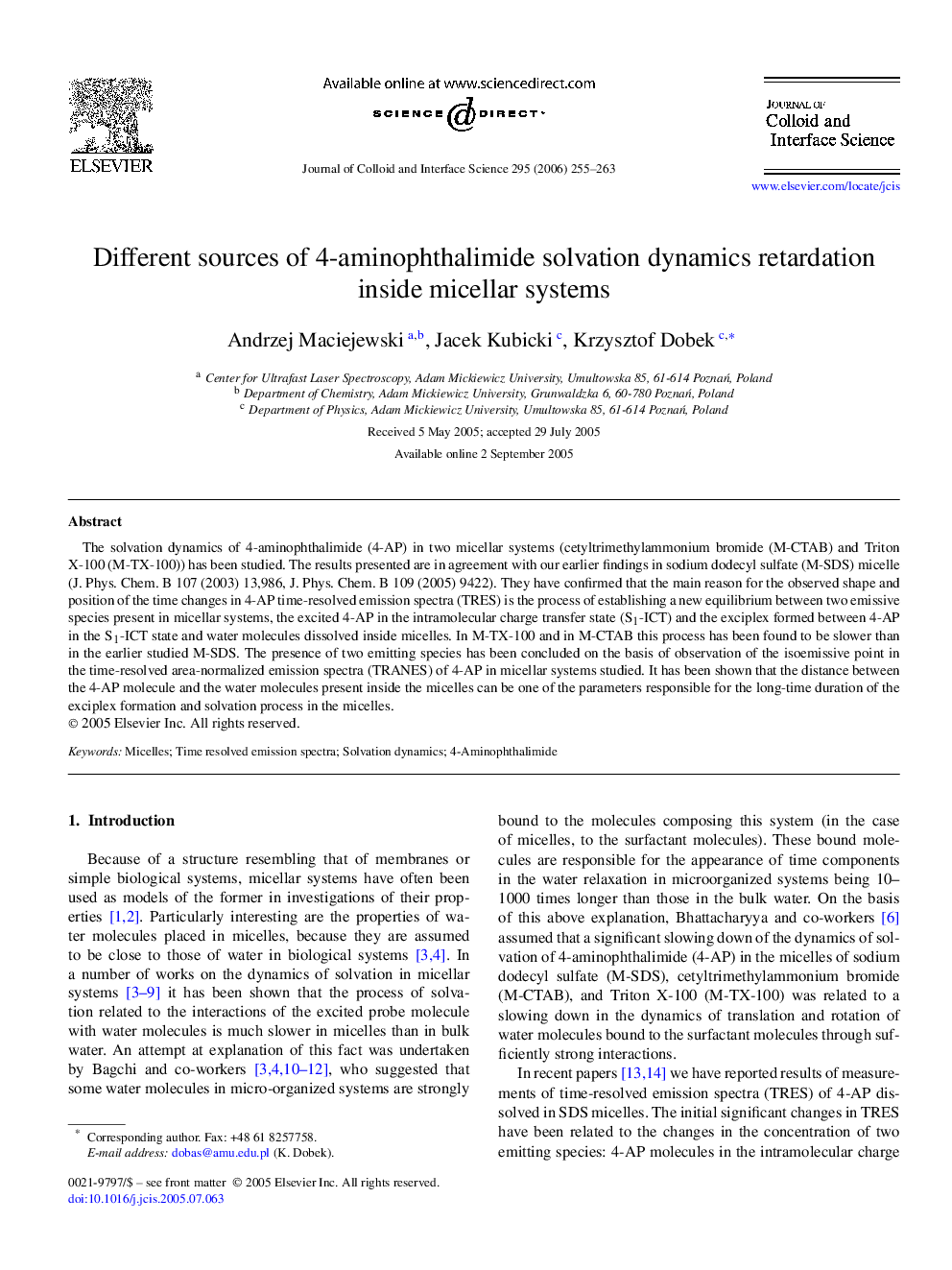| Article ID | Journal | Published Year | Pages | File Type |
|---|---|---|---|---|
| 613881 | Journal of Colloid and Interface Science | 2006 | 9 Pages |
The solvation dynamics of 4-aminophthalimide (4-AP) in two micellar systems (cetyltrimethylammonium bromide (M-CTAB) and Triton X-100 (M-TX-100)) has been studied. The results presented are in agreement with our earlier findings in sodium dodecyl sulfate (M-SDS) micelle (J. Phys. Chem. B 107 (2003) 13,986, J. Phys. Chem. B 109 (2005) 9422). They have confirmed that the main reason for the observed shape and position of the time changes in 4-AP time-resolved emission spectra (TRES) is the process of establishing a new equilibrium between two emissive species present in micellar systems, the excited 4-AP in the intramolecular charge transfer state (S1-ICT) and the exciplex formed between 4-AP in the S1-ICT state and water molecules dissolved inside micelles. In M-TX-100 and in M-CTAB this process has been found to be slower than in the earlier studied M-SDS. The presence of two emitting species has been concluded on the basis of observation of the isoemissive point in the time-resolved area-normalized emission spectra (TRANES) of 4-AP in micellar systems studied. It has been shown that the distance between the 4-AP molecule and the water molecules present inside the micelles can be one of the parameters responsible for the long-time duration of the exciplex formation and solvation process in the micelles.
Graphical abstractSources of changes of 4-AP TRANES in M-CTAB and M-TX-100 micelles.Figure optionsDownload full-size imageDownload as PowerPoint slide
